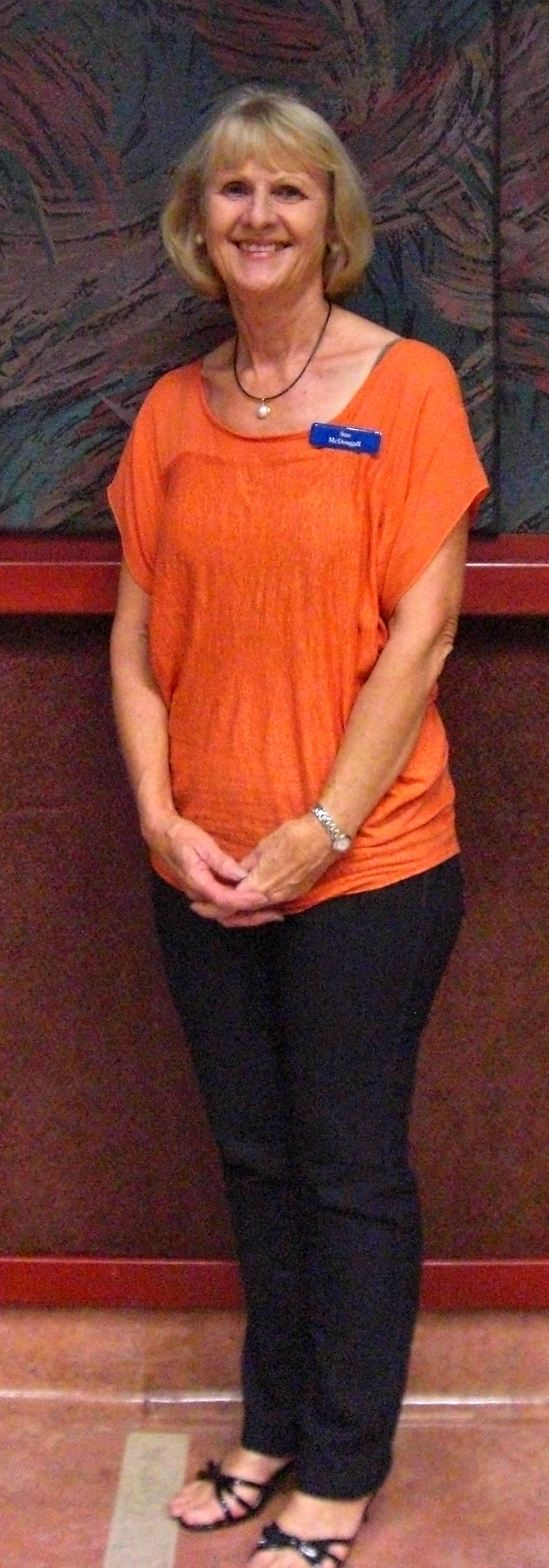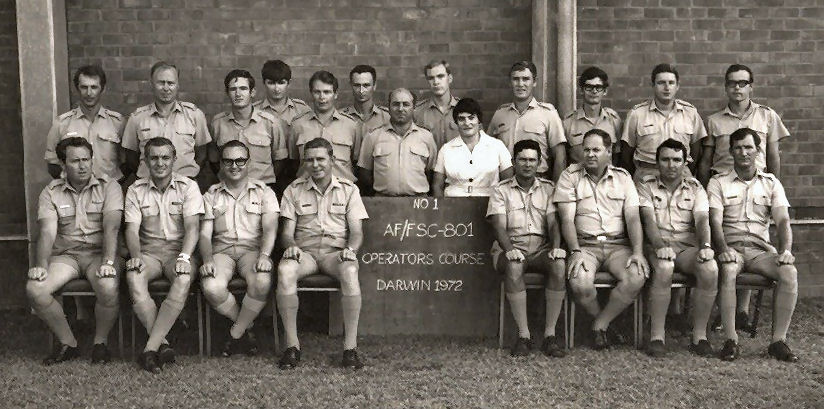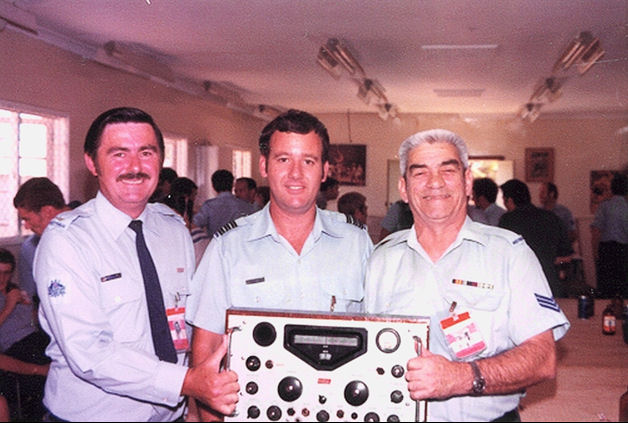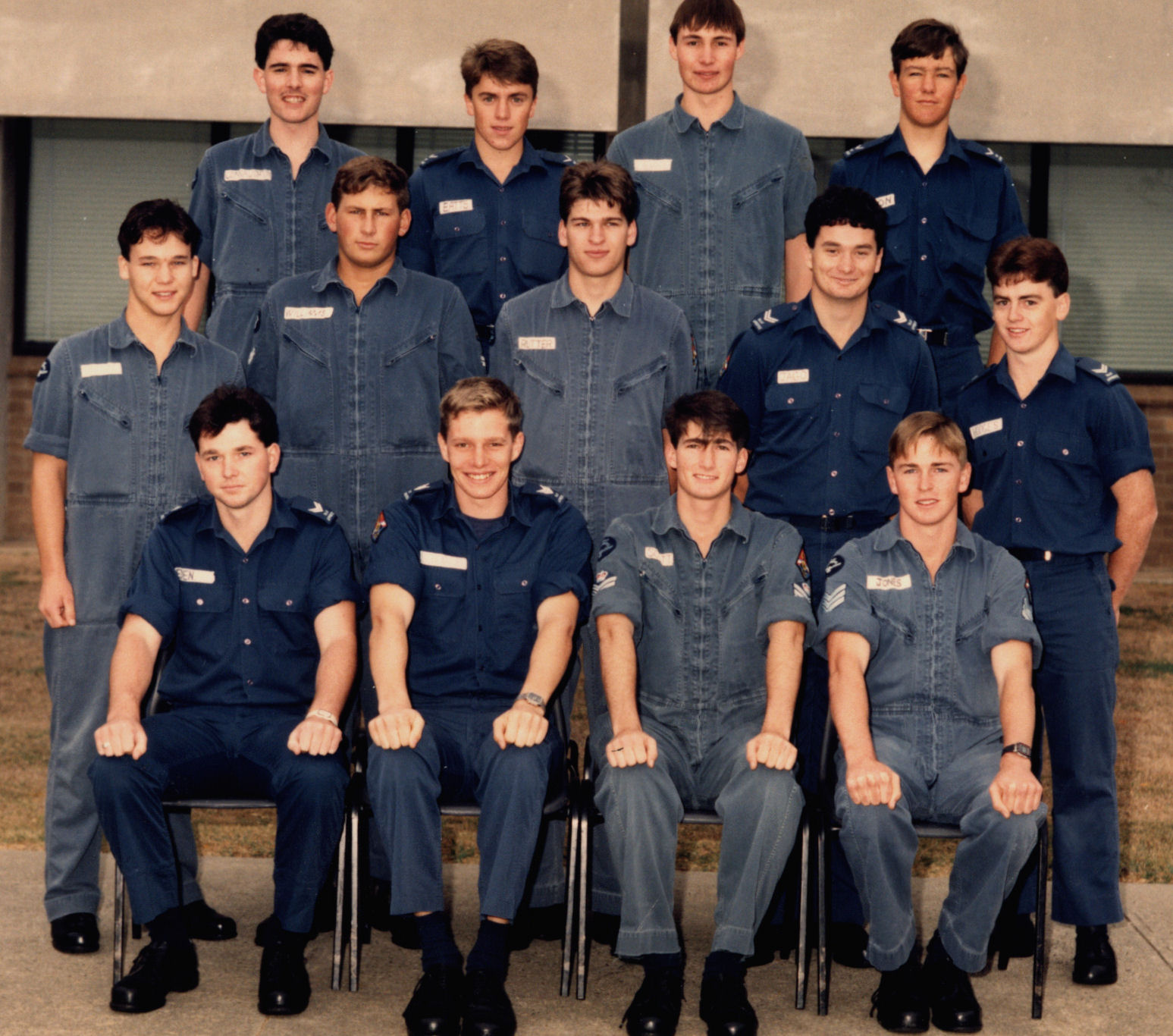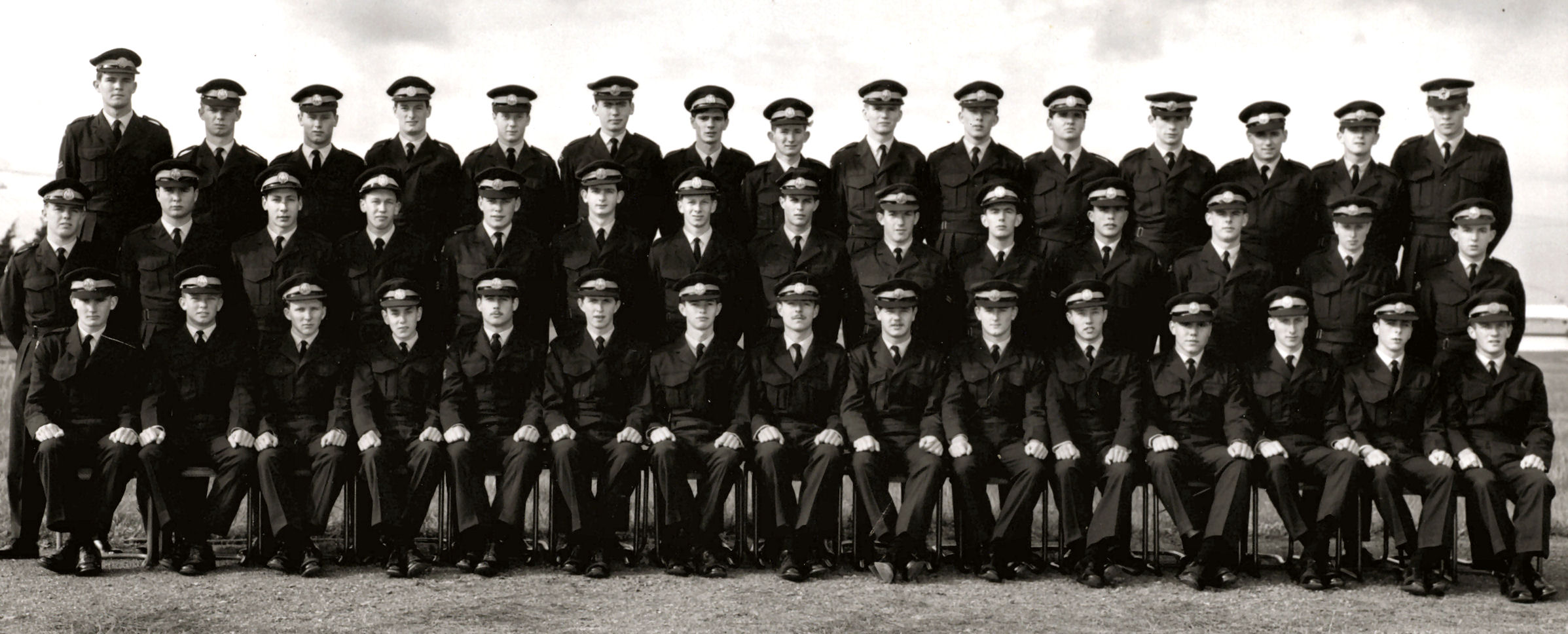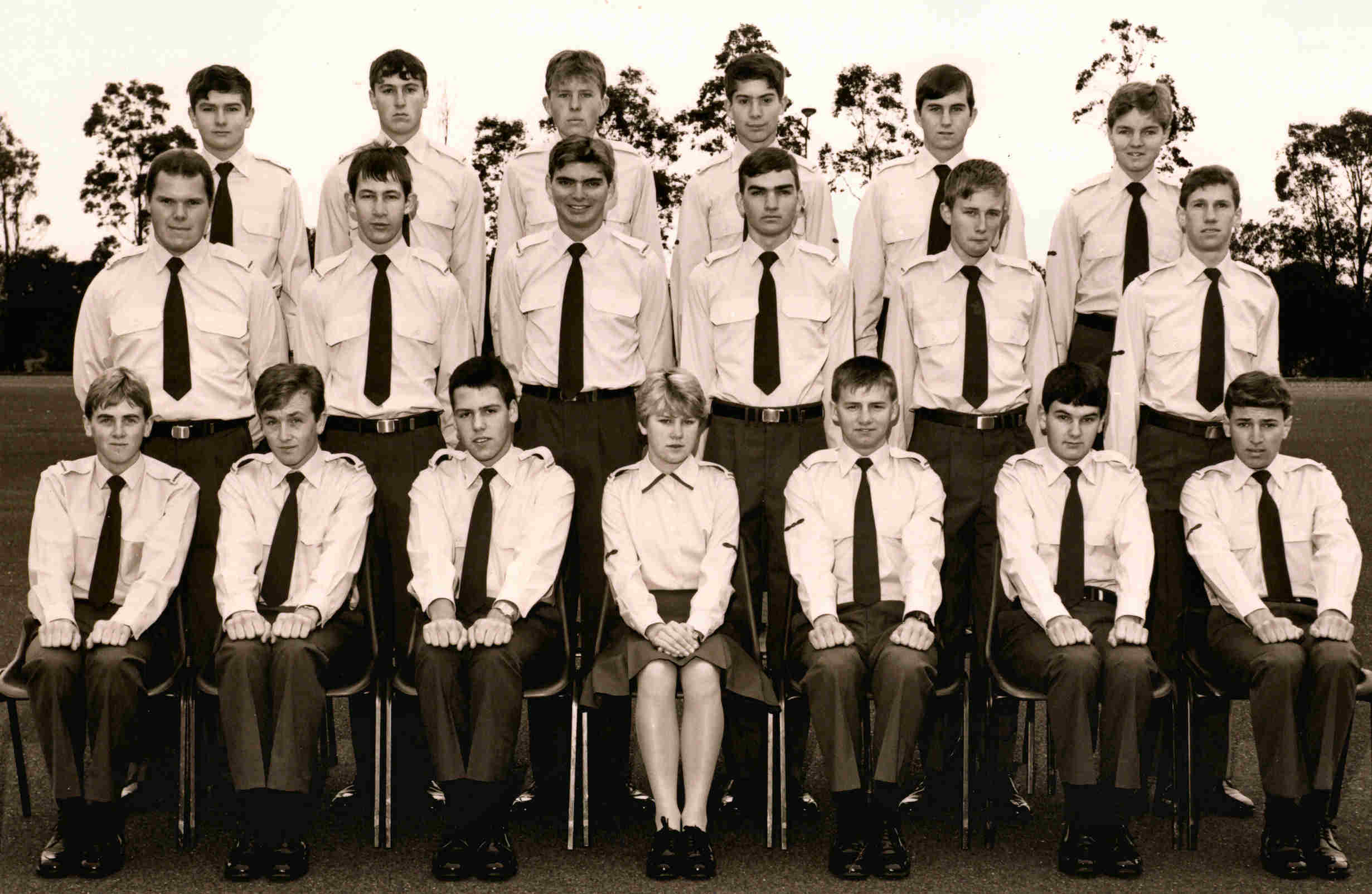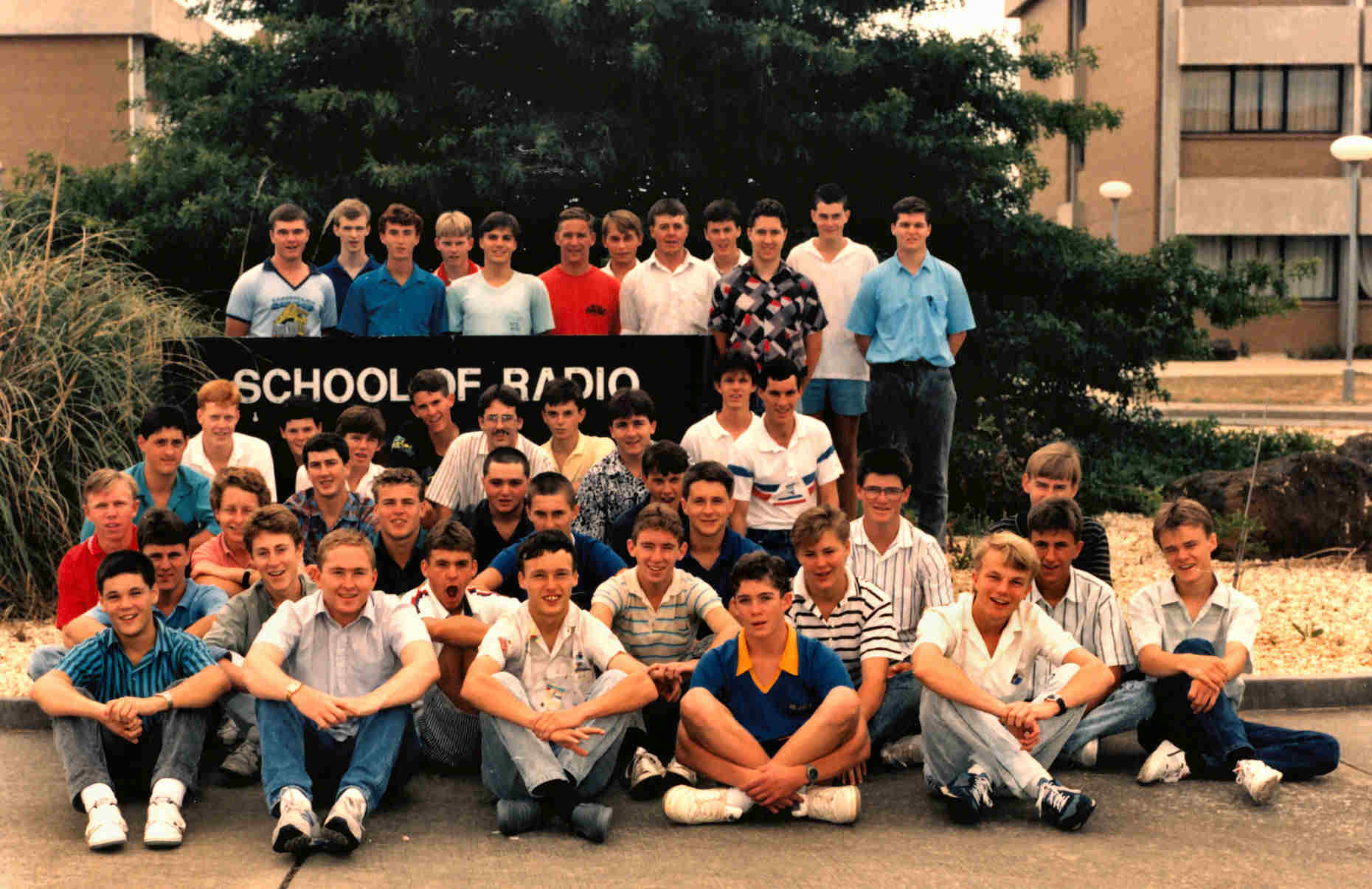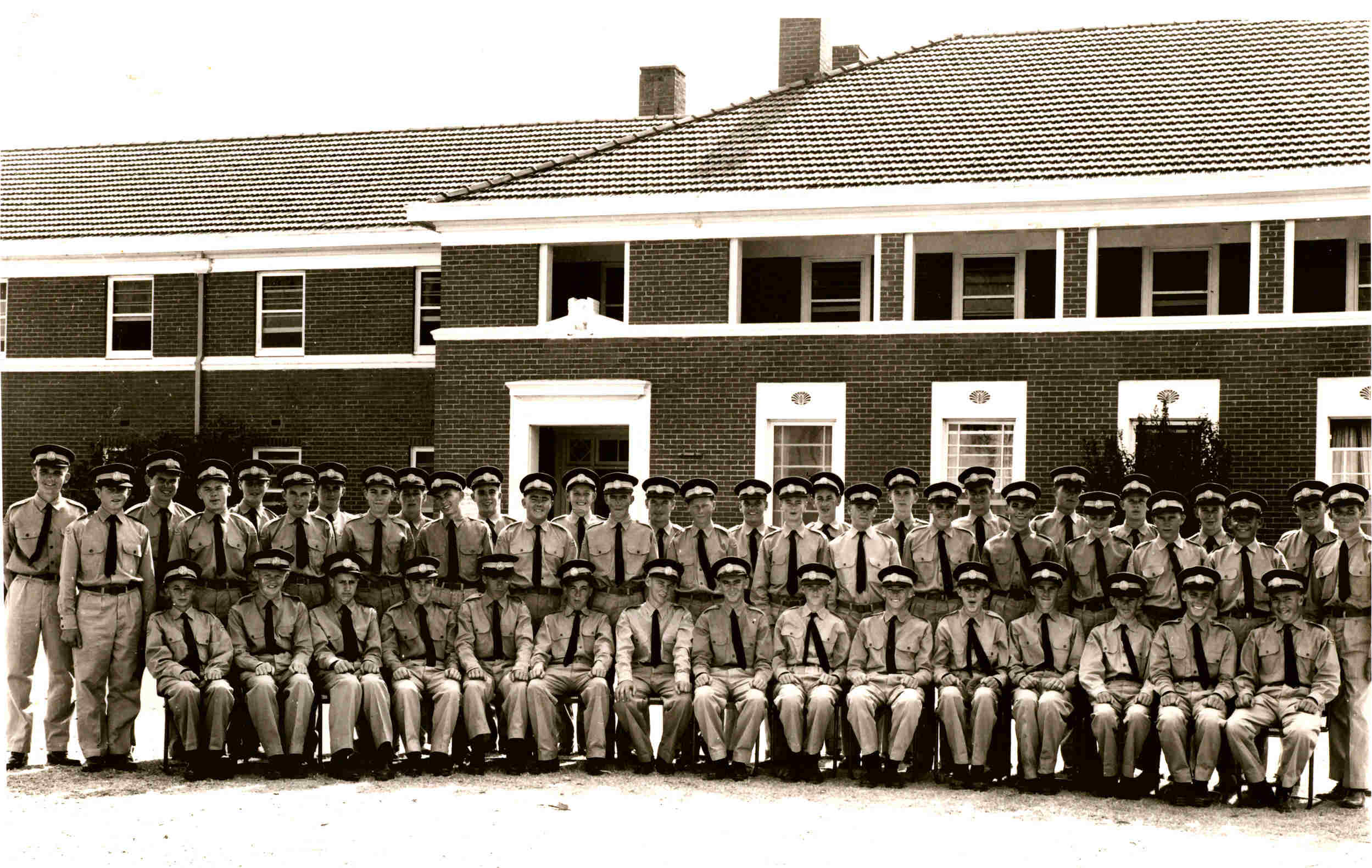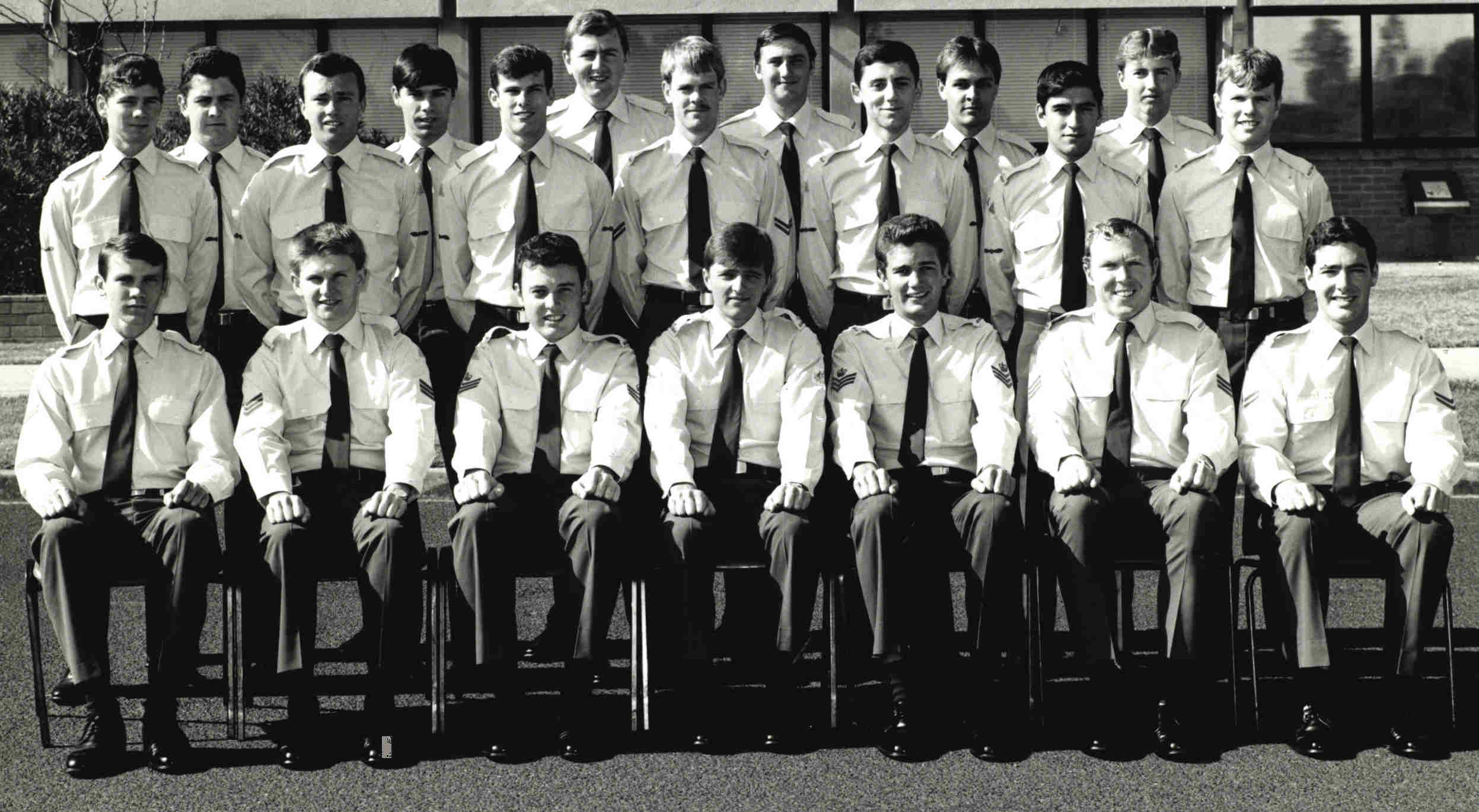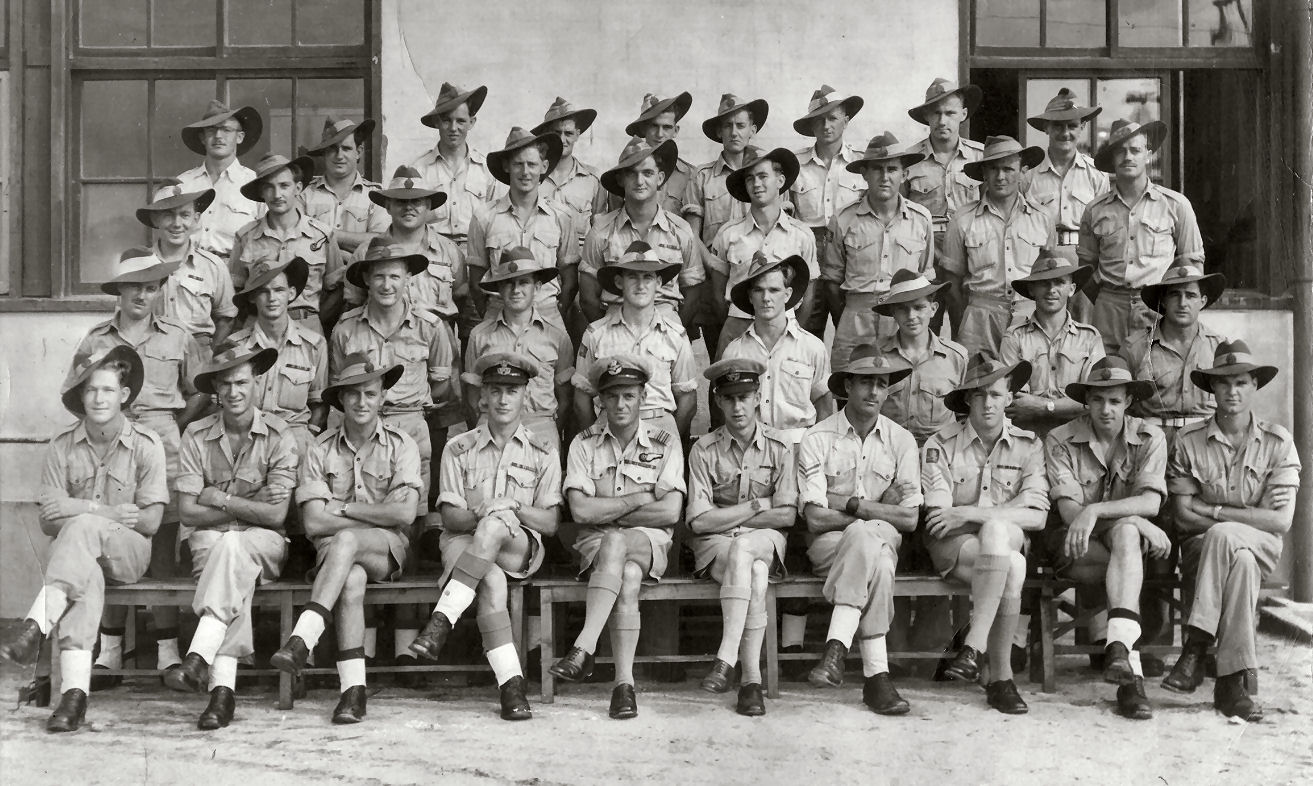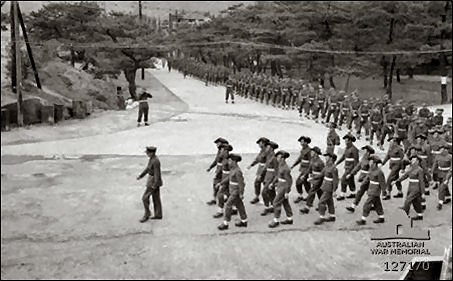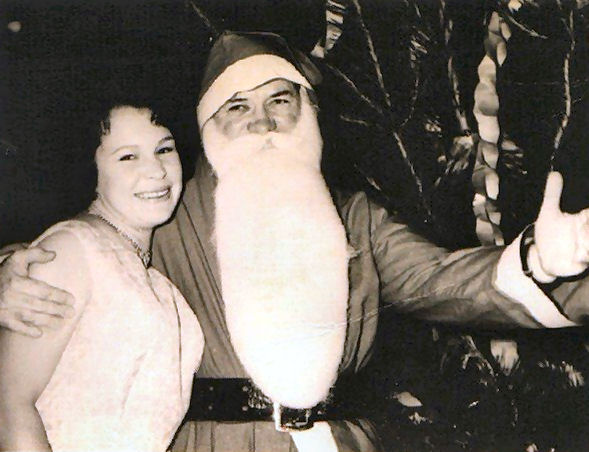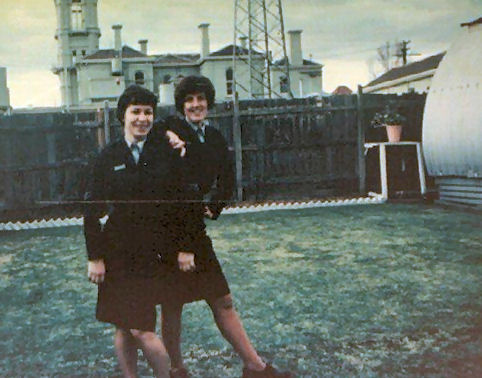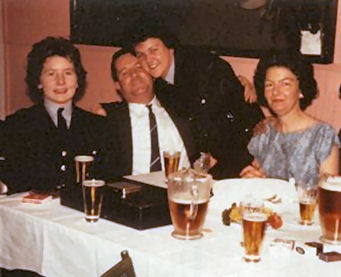|
Radschool Association Magazine - Vol 39 Page 3 |
|
Privacy Policy | Editorial Policy | Profit Policy | Join the Association | List of Members | Contact us | Index | Links |
|
Back Go to page: 1 2 3 4 5 6 7 8 9 10 11 12 13 14 15 16 17 18 19 20 Forward |
| Page 3 Girl.
|
|
|
|
Our lovely Page 3 girl this issue is Sue McDougall. Sue is married to that well known “man about town” John McDougall – ex WOE 1 Sqn. Sue was spotted at the 40th Anniversary of "RTFV-35 Sqn’s leaving Vietnam" celebration.
|
|
No 1 AF/FSC-801 Operators’ “Fred” Course Darwin 1972.
|
|
|
|
Back row L-R: Unknown, Bill RODDICK, Chris KENDRICK, Phil SMITH, Unknown , John HUXLEY, Charlie MacMILLAN, Dennis BINGHAM, Dotty ZAMMIT, Peter CLIFFORD, Unknown, Mick GIBSON, Unknown. Front row L-R: Bob HARRIS, Ron VERNON, John RENFREW, Ernie GIMM (Instructor), Alan HYDE (Instructor), Rex RALPH (WO Coms), Bevan DELANEY, Ian ARMSTRONG.
|
|
|
|
Denis Pengelly, Wg/Cdr T. C. Douglas C.O. 3Telu, Ned Squires - in the early 1980’s (we don't know where though) |
|
|
|
|
|
|
|
2 Squadron Com Centre.
John Elliott has trawled through the Vietnam Veterans Nominal Roll and prepared a list of all Comm Centre staff who were posted to 2 Sqn in Phan Rang. John said preparing the list was mildly therapeutic. He said it allowed him to remember the people that he served with and reminded him of some of the experiences they all went through, he says he would recommend the exercise to anybody that's worried about their possible memory loss.
You can see it HERE.
If you notice any errors and or omissions, contact John via email HERE
|
|
|
|
41 Appy.
41 Appy passed out on the 7th December, 1988. This must have been around the time that the old ‘Ralls were given the flick and the new work uniform introduced.
|
|
|
|
Back Row. L-R: Rob Connaughton, Mark Eatts, J Lemke, B Carson. Middle Row, L-R: Chris Brooke, A Williams, N Rutter, N Jago, S Hodges. Front Row, L-R: R Eden, K Tschugguel, Stuart Scott, Darren Jones. |
|
We heard from Mark Eatts, he tells us that there are three blokes from the course still in the RAAF, WOFF Chris Brooke CSM, SQNLDR Stuart Scott and WGCDR Darren Jones. The blokes have had a 10 and 20 year reunion - and the 30th is going to be a biggy.
|
|
Three friends from the local congregation were asked, 'When you're in your casket, and friends and congregation members are mourning over you, what would you like them to say?' Artie said: ' I would like them to say I was a wonderful husband, a fine spiritual leader, and a great family man.' Eugene commented: 'I would like them to say I was a wonderful teacher and servant of God who made a huge difference in people's lives.' Al said: 'I'd like them to say, 'Look, he's moving!'
|
|
21 Appy.
21 Appy graduated from Laverton on the 2nd September, 1969. Unfortunately, we don’t have any first names.
|
|
|
|
Back row L-R: Cpl App Young, Cpl App Goodman, L App O’Malley, L App Vardy, L App Simpson, L App Cleary, L App Gavrilovic, L App Campbell, Cpl App Schmidt, Cpl App Stanley, L App Wade, L App Drady, F Sgt App Hall, L App Withenshaw, W Off App Theodore.
Middle Row L-R: L App Wykes, L App Beutel, L App Leitch, L App Mayhew, F Sgt App Nelson, F Sgt App Naylor, L App Leach, Sgt App Maney, Cpl App Clapham, Cpl App Eden, L App Duck, Sgt App Laird, L App Richards, L App Bond.
Front Row L-R: L App Kraft, L App Clark, L App Blanch, L App George, Sgt App House, L App Richards, L App Schubert, L App Wyllie, L App Young, L App Lange, L App Wood, L App Hetper, L App Locke, L App Walter, L App Lowe.
|
|
A small town is a place where there is little to see or do, but what you hear makes up for it.
|
|
1986.
The photo below was taken in March 1986 – that’s all we knew. Geoff Hongell told us that it was of 40 Appy which graduated in 1987. He also had a few names, can anyone help with the rest??
|
|
|
|
Back Row: All unknown. Middle Row L-R: Don't know, Jeff Gardner, Kurt Weston, Don't know, Don't know, Colin Mason. Fron Row L-R: Greg Kerkham, Dave Brown, Shane Creanor, |
|
|
|
Appies, Jan 1990.
Number 9 Technologist Apprentice Course (behind sign) and number 44 Radio Apprentice Course in front of sign.
Number 9 Technologist Appy Course was the last TAC to go through Laverton, it passed out on the 8th December 1992 and 44 Radio Course was the second last Appy course and passed out from Laverton on the 10th December 1991.
Once again we can’t put names to faces but we do have the names of the young blokes (in alphabetical order) who passed out.
|
|
|
|
9 TAC M Banham, J Carige, M Christie, B Clarke, C Dixon, C Lavers, H Lindley, C Lloyd, S Oppermann, S Owen, S Paton, N Patterson, D Smith, J Watts, D Wise, T Zahn.
44 Appy C Bray, A Caruana, B Cowie, N Gilchrist, C Hellwege, L Hull, D Liddle, J Loveday, H McCarthy, S MacFarlane, R Maag, C Meech, M Menzel, D Phillips, M Rath, S Stabler, T Thorne, M Trundle, M Whitworth.
|
|
If it ain't broke, the warranty isn't up yet.
|
|
18 Appy, Feb 1964. (See HERE) for names |
|
|
|
|
|
No 2 Technologist Appy Course 1985 |
|
|
|
|
|
Standing L-R:
B. Denton, P. Thompson, R. Dwyer, C. O’shannessy,
P. Sammons, J. Price, S. Nolan, R. Kelly, C. Coghill, D. Ipsen, F.
Gonzales, S. Moen, R. Goyns. |
|
|
|
Comms people BOFU Japan, 1947.
|
|
|
|
|
|
The British Commonwealth Occupation Force (BCOF), was the name of the joint Australian, Canadian, British, Indian and New Zealand military forces which occupied Japan from 21 February 1946 until the end of occupation in 1952. At its peak, BCOF comprised about 40,000 personnel, equal to about 25% of the number of US military personnel in Japan. Participation in the British Commonwealth Occupation Force (BCOF) was the first time that Australians were involved in a military occupation of a sovereign nation which it had defeated in war.
The entire BCOF force totalled 45,000 of which about 16,000 were Australians. This included an infantry contingent of 4,700, base units consisting of 5,300, an air force wing of 2,200, and 130 nursing staff. The Navy (RAN) also had a presence in the region as part of the British Pacific Fleet. For two-thirds of the period of occupation the Commonwealth was represented solely by Australians, and throughout its existence BCOF was always commanded by an Australian officer.
BCOF headquarters was located at Kure, which is only about 25 klms south east of Hiroshima.
Left, Australians marching on ANZAC Day in Kure.
During the war, Kure was Japan’s military and naval centre and was the home base of the largest battleship ever built, the Yamato.
The RAAF component, which was known as BCAIR, was stationed at Befu, which is about 200 klms south west of Hiroshima. The RAAF squadrons involved were Nos 76, 77, and 82, all flying Mustangs. By 1950 only one Australian squadron, No. 77, remained in Japan.
By early 1947 BCOF had begun to decline and, by the end of 1948, was composed entirely of Australians. The force was dismantled in 1952, as responsibilities in Japan were handed over to the British Commonwealth Forces Korea. Some personnel stayed on to serve in the Korean War. Members of No. 77 Squadron, for example, had their "going home" celebrations interrupted by the news they were to be sent immediately to Korea. BCOF ceased to exist on 28 April 1952, when the Japanese Peace Treaty came into effect.
|
|
|
|
Australia's role in BCOF.
The primary objective of BCOF was to enforce the terms of the unconditional surrender that had ended the war the previous September. The task of exercising military government over Japan was the responsibility of the United States forces. BCOF was required to maintain military control and to supervise the demilitarisation and disposal of the remnants of Japan's war-making capacity. To this end, Australian Army and RAAF personnel were involved in locating and securing military stores and installations. The Intelligence Sections of the Australian battalions were given targets to investigate by BCOF Headquarters, in the form of grid references for dumps of Japanese military equipment. Warlike materials were destroyed and other equipment was either retained by BCOF or returned to the Japanese. The destruction or conversion to civilian use of military equipment was carried out by Japanese civilians under Australian supervision.
The RAN component of BCOF was responsible for patrolling the Inland Sea to prevent both smuggling and the illegal immigration of Koreans to Japan. It was assisted by the RAAF whose aircraft were also involved in tracking vessels suspected of smuggling or transporting illegal immigrants. RAAF squadrons also flew surveillance patrols over each of the prefectures in the BCOF zone in order to help locate leftover weapons and ordnance.
By the end of 1946 the task of demilitarising Japan required less effort and the role of the occupying forces was changing, with guard duties and training becoming the main focus.
Why was Hiroshima bombed.
At the time of its bombing, Hiroshima was a city of both industrial and military significance. A number of military camps were located nearby, including the headquarters of Field Marshal Shunroku Hata's 2nd General Army Headquarters, which commanded the defence of all of southern Japan. His command consisted of some 400,000 men, most of whom were on Kyushu where an Allied invasion was correctly expected. Also present in Hiroshima was the headquarters of the Fifty-Ninth Army, and most of the 224th Division, a recently formed mobile unit. The city's air defences comprised five batteries of 7-centimetre (2.8 in) and 8-centimetre (3.1 in) anti-aircraft guns.
Hiroshima was also a minor supply and logistics base. It was a communications centre, a storage point, and an assembly area for troops and was one of several Japanese cities left deliberately untouched by earlier American bombing, allowing a pristine environment to measure the damage caused by the atomic bomb. The centre of the city contained several reinforced concrete buildings and lighter structures. Outside the centre, the area was congested by a dense collection of small wooden workshops set among Japanese houses. A few larger industrial plants lay near the outskirts of the city. The houses were constructed of wood with tile roofs, and many of the industrial buildings were also built around wood frames. The city as a whole was highly susceptible to fire damage.
At the time of the attack, the population was approximately 340,000–350,000.
|
|
Business conventions are important
because |
|
|
|
Santa’s Helper
|
|
|
|
Lorrie Perfect and Col Kelly, cunningly disguised as Santa, Frognall 1966. |
|
|
|
|
|
Lorrie Perfect and Noreen McCabe. WRAAF Compound, Frognall – 1966. |
|
|
|
|
|
Maureen Duggan, Skippy Kirston, Sally Malone, Mary Eggers. Frognall, 1966. |
|
|
|
Three friends from the local congregation were asked, 'When you're in your casket, and friends and congregation members are mourning over you, what would you like them to say?' Artie said: ' I would like them to say I was a wonderful husband, a fine spiritual leader, and a great family man.' Eugene commented: 'I would like them to say I was a wonderful teacher and servant of God who made a huge difference in people's lives.' Al said: 'I'd like them to say, 'Look, he's moving!'
|
|
Back Go to page: 1 2 3 4 5 6 7 8 9 10 11 12 13 14 15 16 17 18 19 20 Forward
|
